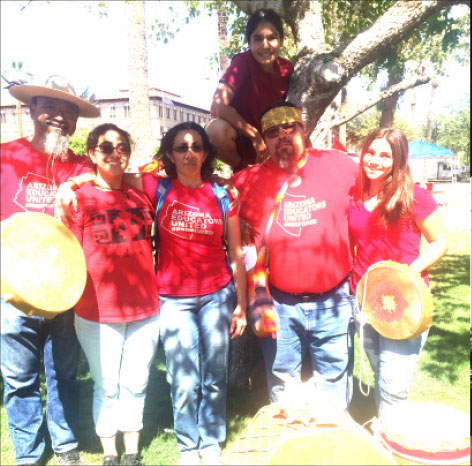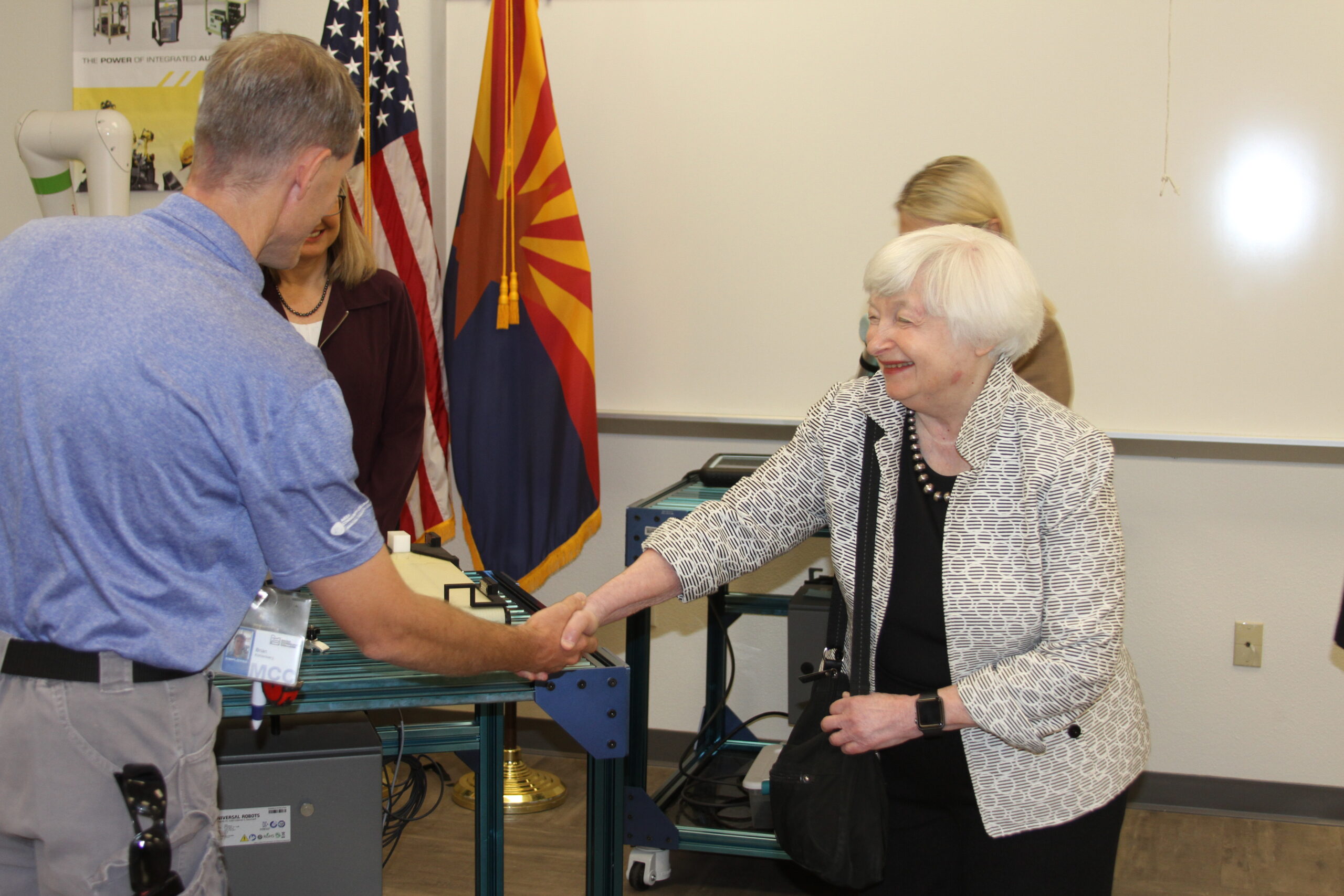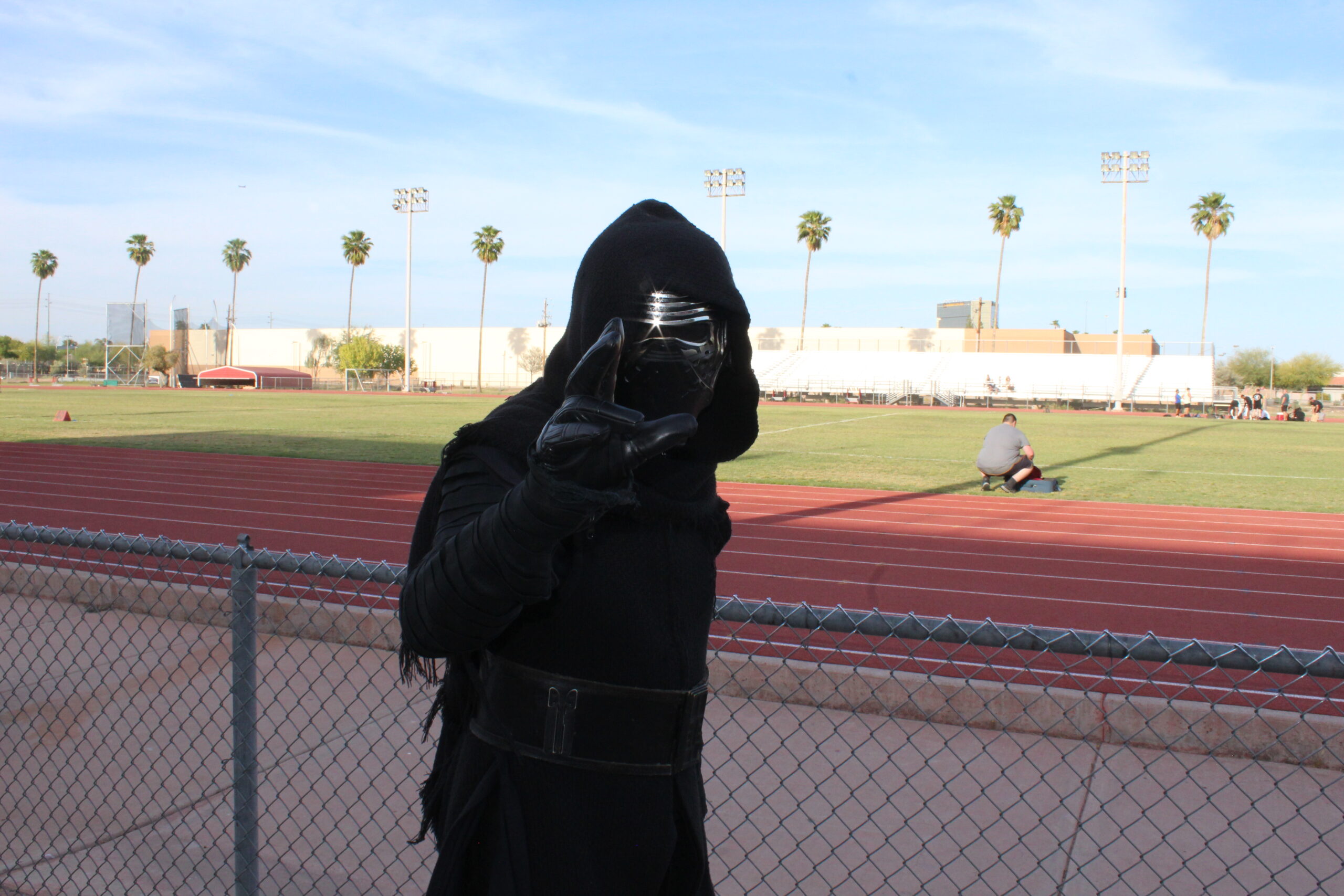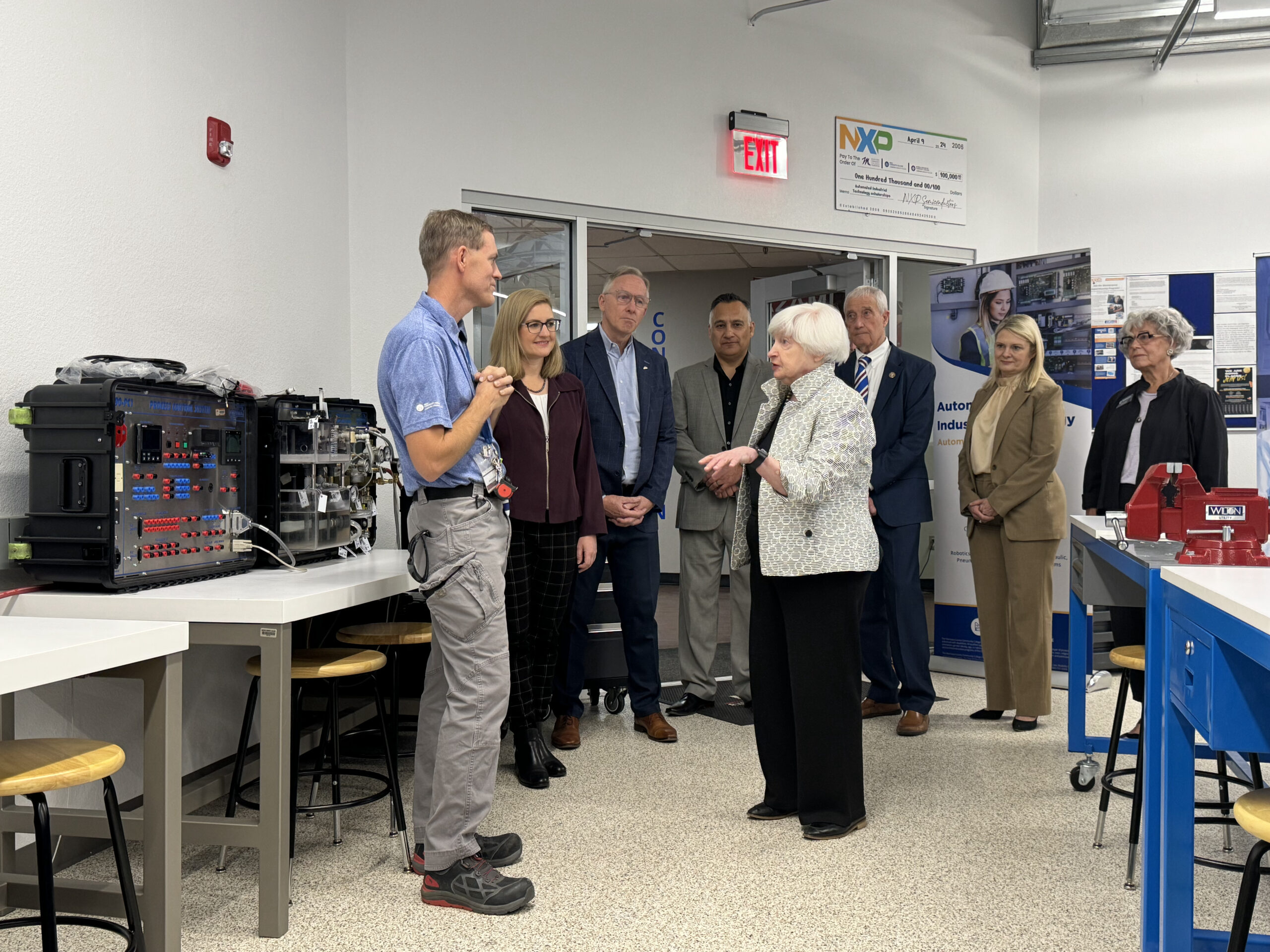Indigenous peoples join in RedForEd fight
Sierralie Perez
MesaCC Legend
 The RedForEd movement has been know to many as the teachers protest for better pay and proper funding for Arizona schools. Teachers, parents and the community were among the protesters, and also marching alongside this group were the indigenous communities Until the very last hours of the protest, the indigenous people were marching along playing instruments, holding up signs up, and enjoying the presence of the people around them. “We never went to war back in the old days without it being [a] ceremony. We’re here at war, but we’re bringing our tools, our instruments,” Oztotlecoyotl Xiloyotl, a member from Nahuacalli Educator Alliance, said. “To come out here without our instruments it’s like we’re coming unarmed, those are our arms,” Xiloyotl added.
The RedForEd movement has been know to many as the teachers protest for better pay and proper funding for Arizona schools. Teachers, parents and the community were among the protesters, and also marching alongside this group were the indigenous communities Until the very last hours of the protest, the indigenous people were marching along playing instruments, holding up signs up, and enjoying the presence of the people around them. “We never went to war back in the old days without it being [a] ceremony. We’re here at war, but we’re bringing our tools, our instruments,” Oztotlecoyotl Xiloyotl, a member from Nahuacalli Educator Alliance, said. “To come out here without our instruments it’s like we’re coming unarmed, those are our arms,” Xiloyotl added.
“Instruments have a powerful connection with us, to our indigenous roots and mother earth,” Sally Gonzales, state representative for District 3, said. Throughout those five days there were different tribes protesting, including the Tohono O’odham, Hopi, Dine, Yaqui, and Navajo. Almost all 22 federally recognized tribes in Arizona supported the movement. The teachers in the valley were not alone. “There’s a misconception that this RedForED movement has to do with funding for teachers, where in reality what they’re asking for is a funding for education as a whole.” Raquel Enrique, a member of the Phoenix Union High School District, said. Many of the teachers of the tribal communities said they brought their traditional instruments to show that they were there to have their voices heard and fight for what they say is right.
“We live in some crazy times, but for us nothing is separate, everything is all included. That’s why everything is all our relations, so when we’re out here, we’re still doing ceremony,” Xiloyotl said, “Nothing is not connected.” Indigenous people have marched for hundreds of years to fight and win the battles of things that that the federal government tries to take away from them. This is a constant battle for Native Americans, it’s a never ending war. The instruments they brought to rallies included drums, a seashell that when blown into the sound represents a calling out, and aromatic sage incense to protect the people. “We’ve been criticized sometimes by other native people, other indigenous, like ‘why are you bringing those sacred instruments to political events?’ But that’s the thing, it’s all sacred to us. Just because we’re here with other people that are not indigenous, we’re still indigenous. We carry everything with us,” Oztotlecoyotl said.
“Part of what needs to be considered in that budget is the… implementation of indigenous peoples studies,” Enrique said. Enrique is referring to the state not approving indigenous studies in class rooms. Some schools in Arizona taught Native American studies for a while, A program THAT was funded by the government On a per Native American student basis. Meaning if a school has 50 Native American students, It would recieve a per pupil fund for that exact number.Despite intrest in the program, the course was eliminated to redirect funds to other courses. “The money that they gave us to run those classes, that price per Native American student hasn’t changed in twenty years or maybe more, it needs to be upgraded,” Sandra Gonzales, a former Native American studies teacher at Gililland Middle School, said. Oztotlecoyotl said for many of the teachers marching this event was the first time they protested, but for indigenous people this was just one of many.
“For us as educators in the education system it’s a big deal, but in the scheme of life as an indigenous person, this is just small papas. We’re used to eating this, this is what we do,” Oztotlecoyotl said. He explained that the RedforEd march wasn’t the largest protest in the state. In most recent memory SB1070, the 2010 anti-immigration Arizona law, was the largest the state had experienced. And in both occasions, the indigenous people were present. Oztotlecoyotl adds that the RedforEd may being smaller, but the need for support is as great. Indigenous educators said they will continue to fight and keep issues of injustices, like lack of education funding, at the forefront of their battle. “It’s all the same, nothing is separate to us. We have our sciences that are sacred, we have our politics that’s sacred. It’s a fight.”









